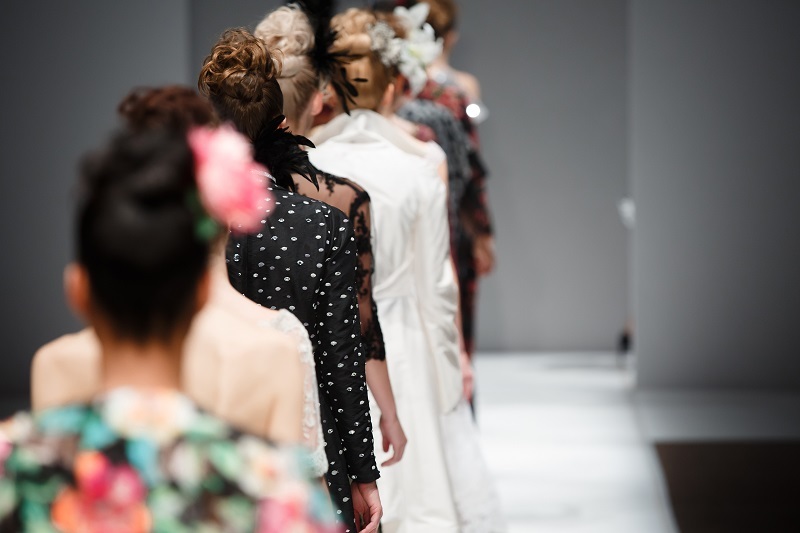Delving into Your Birth Flower: What Can It Tell Us?
Posted on 17/08/2025
Delving into Your Birth Flower: What Secrets Does It Hold?
Have you ever wondered what your birth flower is and what hidden meanings or personality insights it might reveal? In many cultures, flowers symbolize more than just beauty--they carry traditions, hopes, and even clues to your character. Delving into your birth flower can uncover fascinating facts about tradition, history, and your unique place in the world. In this comprehensive guide, we explore the origins, meanings, and symbolism tied to each month's signature bloom, offering rich insights for anyone curious about the significance behind their own special flower.

The Fascinating World of Birth Flowers
Birth flowers are akin to zodiac signs or birthstones, with each month assigned a unique blossom that represents individuals born during that time. These floral emblems are rooted in centuries-old traditions from countries including England and the United States. They are gifted as bouquets for birthdays, incorporated in sentimental gifts, and even serve as inspiration for art and jewelry.
Why Are Birth Flowers Significant?
- Cultural symbolism: Different flowers hold specific meanings in various cultures.
- Personalized gifts: They make thoughtful, meaningful presents.
- Botanical astrology: Some believe birth flowers influence your destiny and character.
- Historical tradition: The language of flowers, or floriography, flourished during the Victorian era.
Just as people turn to astrology or numerology, learning about your birth flower can deepen your connection to nature, tradition, and even yourself.
Discovering Your Birth Flower: A Month-by-Month Guide
Each month is linked to a distinctive flower, each with its own layered meanings. Below you'll find a comprehensive guide to birth flowers, the symbolism they carry, and personality traits they embody.
January: Carnation & Snowdrop
- Carnation: Symbolizes fascination, distinction, and love. The various colors also stand for friendship (yellow), admiration (red), or luck (white).
- Snowdrop: Represents hope and beauty at the darkest time of year, as these dainty flowers bloom in the snow.
*If you're a January baby, your birth flowers remind us of resilience, warmth, and the promise of new beginnings, even during winter's chill.*
February: Violet & Primrose
- Violet: Embodies modesty, faithfulness, and virtue. Delving into your birth flower as a Violet means you're quietly strong, trustworthy, and kind.
- Primrose: A symbol of young love and the promise that spring is coming.
March: Daffodil & Jonquil
- Daffodil: Linked with new beginnings, hope, and rebirth.
- Jonquil: Conveys desire, sympathy, and affection.
March birth flowers vibrate with the optimistic energy of spring emerging after winter's slumber.
April: Daisy & Sweet Pea
- Daisy: Symbolizes innocence, purity, and true love.
- Sweet Pea: Denotes pleasure, gratitude, and blissful departure.
Daisies are cheerful and hearty, meaning that April-born people are viewed as positive, loyal, and loving souls.
May: Lily of the Valley & Hawthorn
- Lily of the Valley: Represents sweetness, humility, and a return to happiness.
- Hawthorn: Seen as a symbol of hope and supreme happiness.
If you have a May birthday, your birth month flower suggests you bring positivity and gentle joy wherever you go.
June: Rose & Honeysuckle
- Rose: Universal symbol for love, passion, and beauty. Each color has a special message (red: love, yellow: friendship, white: innocence).
- Honeysuckle: Signifies generous bonds of love and devoted affection.
June babies, take pride: your birth flower's meaning resonates with romance and admiration.
July: Larkspur & Water Lily
- Larkspur: Evokes positivity, an open heart, and first love.
- Water Lily: Represents eloquence, purity, and beauty.
August: Gladiolus & Poppy
- Gladiolus: Stands for strength of character, integrity, and infatuation.
- Poppy: Symbolizes imagination, consolation, and remembrance.
September: Aster & Morning Glory
- Aster: Denotes wisdom, patience, and valor.
- Morning Glory: Associated with unrequited love and affection.
October: Marigold & Cosmos
- Marigold: Radiates creativity, warmth, and passion.
- Cosmos: Represents harmony, order, and peace.
November: Chrysanthemum
- Chrysanthemum: Symbolizes joy, optimism, and friendship. Different colors can also stand for loyalty and honesty.
Those born in November shine with sincere optimism and resilient spirit, as highlighted by their personal birth flower.
December: Narcissus & Holly
- Narcissus: Represents self-esteem, hope, and rebirth.
- Holly: Offers protection and good luck, especially in darker times.
December's birth flowers reflect both the festive and hopeful spirit that characterize the end of the year.
The Symbolism and Personality Tied to Your Birth Flower
What does your birth flower say about you? The meaning of birth flowers is rich and multifaceted, drawing on centuries of myth, folklore, and the natural world's rhythms.
Key Personality Traits By Flower:
- Carnation: Loyal, passionate, and creative.
- Violet: Faithful, modest, and wise.
- Daffodil: Optimistic, honest, and lively.
- Daisy: Innocent, amiable, and genuine.
- Lily of the Valley: Kind-hearted, empathetic, and tranquil.
- Rose: Charismatic, loving, and strong.
- Larkspur: Joyful, open, and humorous.
- Gladiolus: Confident, ambitious, and determined.
- Aster: Thoughtful, organized, and wise.
- Marigold: Warm, sociable, and vibrant.
- Chrysanthemum: Cheerful, trustworthy, and honest.
- Narcissus: Hopeful, adaptable, and supportive.
While there's no scientific basis behind these traits, knowing your birth flower's traits can be fun, comforting, and insightful. Many people enjoy reflecting on these associations--which, like horoscopes, often ring surprisingly true.
Birth Flower History and the Language of Flowers
The practice of assigning birth flowers to each month is centuries old. Floral symbolism especially flourished in Victorian England, when strict social codes made verbal expression difficult. People relied on flowers to communicate feelings and emotions without words--a practice called floriography.
Gifting someone their birth month flower didn't simply celebrate the day they were born; it also imparted blessings and wishes. For instance, presenting a friend with daisies in April symbolized wishing them ongoing happiness and loyal companionship.
How Cultures Interpret Birth Flowers
- Western traditions: Birth flowers have ties to Roman and Greek mythologies.
- Asian cultures: Certain flowers such as chrysanthemum (Japan) represent longevity and good fortune.
- Native American symbolism: Many tribes use wildflowers for spiritual ceremonies and healing.
Today, exploring your personal birth flower remains a meaningful way to connect with global history and family traditions.
Creative and Modern Uses of Birth Flowers
The concept of birth month flowers isn't restricted to history and folklore. In the 21st century, their popularity is flourishing in various forms:
How People Celebrate Birth Flowers Today
- Jewelry and keepsakes: Many artisans create beautiful necklaces, rings, and charms engraved with birth blossoms.
- Personalized gifts: From water bottles to wall prints, artists design decor featuring a loved one's bloom.
- Birth flower tattoos: These have become a trending and artistic way for people to express their identity.
- Floral arrangements: Birthday bouquets centered around the month's flower add a thoughtful, personal touch.
You can even find personalized stationery, clothing, and custom art pieces celebrating your special flower, allowing you to carry its symbolism with you daily.

How to Connect With Your Birth Flower in Daily Life
- Grow it in your garden: Cultivating your personal birth flower can be a rewarding and grounding experience.
- Include it in rituals: Use it in self-care routines, such as infusing bathwater or pressing blooms in journals.
- Create herbal teas or recipes: Some birth flowers, like violets, are edible and can inspire creative cuisine.
- Celebrate anniversaries and milestones: Incorporate your birth flower into celebrations and special dates.
By embracing the beauty and meaning of your birth flower, you forge a tangible connection to the rhythms of nature and tradition, enriching your sense of self and community.
Conclusion: What Does Your Birth Flower Reveal?
Delving into your birth flower opens up a world of symbolism, history, and personalized meaning. Each flower is rich in tradition, embodying traits and hopes that can offer comfort, identity, and even guidance as you journey through life. Whether you're gifting a bloom, wearing it as art, or planting it in your garden, these natural emblems remain evergreen symbols of our unique journeys.
Embrace the beauty of your birth flower. Let it inspire you to honor traditions, celebrate milestones, and express your true self--one petal at a time.
Do you know your birth flower? Explore its secrets and see what it can tell you about yourself!
Latest Posts
Delving into Your Birth Flower: What Can It Tell Us?
Enthralling Birthday Flower Selection Guide
Ensure Your Poinsettias Shine Throughout the Season





